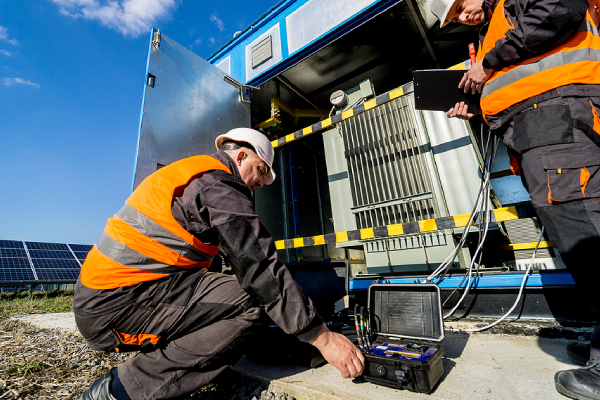Upgrading a current maintenance plan into a reliability-focused maintenance program starts with diagnosing transformer criticality. The analysis allows organisations to develop a more customised plan that generates better cost savings while enabling minimal downtime. That said, how does one determine transformer criticality?
The question of what tests to perform and their frequency is incredibly complex, causing various philosophies to surround this subject. For instance, some state that testing depends on a transformer’s size—the bigger and more expensive the machine, the more tests it should undergo. Although this approach certainly applies to several types of transformers (namely arc furnace transformers and generator step-up transformers that require quarterly sampling due to the unique challenges of their upkeep), looking at size alone is not enough.
The quickest method is to assess each of your transformer equipment and determine the most critical ones. This entails looking downstream from each transformer and determining where failures would be most critical to the plant’s daily operations.
For instance, let us begin with the main incoming transformer; if it fails, the entire plant will cease to a halt, making it a highly critical transformer that warrants extensive preventative maintenance. A more difficult example would be a small, pole-mounted single-phase transformer that keeps the lights on in the offices. It is common for many to consider skipping testing on these run-to-failure transformers, but what if the same unit powers a fire suppression system? The criticality level then rises given its role in safety.
These scenarios demonstrate the importance of considering each transformer’s application when deciding its criticality. This process is made easier with a formal criticality analysis. To categorise transformers, you will ask several questions that help estimate the potential impact of their failure, look over their history, and evaluate the ease of replacement and repairs.
Below is an example of criticality analysis:
Estimate the impact of a transformer in plant operations based on a scale from 1 to 5 ranging from low to high risk for each of the following:
- Mission Impact – Failure would impede the business’s day-to-day operations.
- Safety Impact – Failure would introduce new and/or safety hazards.
- Customer Impact – Failure would prevent the company from meeting its commitments to its clients.
- Environmental Impact – Failure would lead to costly clean-ups or damaging environmental issues.
- Reliability History – Has the transformer been operating reliably ever since?
- Maintenance History – Assess the transformer’s age and review previous test reports to determine how the unit is ageing.
- Replacement Costs – Consider the potential costs of replacing the transformer, production losses, clean-up, and so on.
- Replacement Lead Time/Spare – Consider the lead time for replacing the transformer and if there is a spare one ready to be used.
Tally the score, which has a maximum of 40. Next, categorise your transformer equipment into four categories, from least to most critical.
Category 1
Transformers that fall under here have low criticality and may be considered run-to-failure units, only requiring a reactive maintenance program or, at the very least, minimal oil testing to keep them running.
Category 2
Although units at this level can still do with just reactive maintenance, they are no longer considered run-to-failure transformers. They may require more tests and field inspections to ensure reliability.
Category 3
Transformers at this level will be viewed differently than those in the previous categories. Performing extensive and annual oil tests, including an IR scan, and using some type of on-line gas monitor will be necessary. It is vital to stay on top of leak repairs and oil maintenance for these units and a complete shutdown for electrical testing every three years or so.
Category 4
Category 4 transformers are the plant’s most critical units, warranting the maintenance plan used in Category 3 with several additions. For instance, you may want to consider increasing the frequency of oil testing to quarterly instead of annually and getting extra diagnostic tools like a moisture monitor, multi-gas monitor, and a partial discharge monitor for the bushings. Of course, it is also important to train the operators handling the extensive maintenance program and whatever new devices they will use to observe the transformers so they understand what the test results are saying.
Conclusion
Evaluating transformers and categorising them based on criticality is a good starting point. Still, it is also best to think outside the box and look beyond the data from your transformer. Always consider what could happen if the transformer broke down unexpectedly and its impact on your operations. It is also important to take note of the factors to consider when selecting a transformer.
Should you need professional assistance in the upkeep of your plant’s many transformers, engaging with a reputable electrical engineering company in Singapore is always the best way to stay on top of all your critical units. These services can help you with transformer maintenance and repair services, generator maintenance, or even electric motor rewinds.

